Dal Pakwan is a classic breakfast dish from Sindhi, Indian cuisine. Pakwan is a crisp, fried bread, traditionally served with, chana dal, drizzled with tamarind chutney, cilantro chutney, and chopped onions. Sharing an easy recipe to make this crisp, fried bread, using pantry staples.
Looking for more breakfast combo? Check out Mathura Ke Dubki Wale Aloo & Khasta Poori(Kachori), Ragda Pattice, Pav Bhaji, Aloo Puri, and Idli, Dosa, & Sambar.
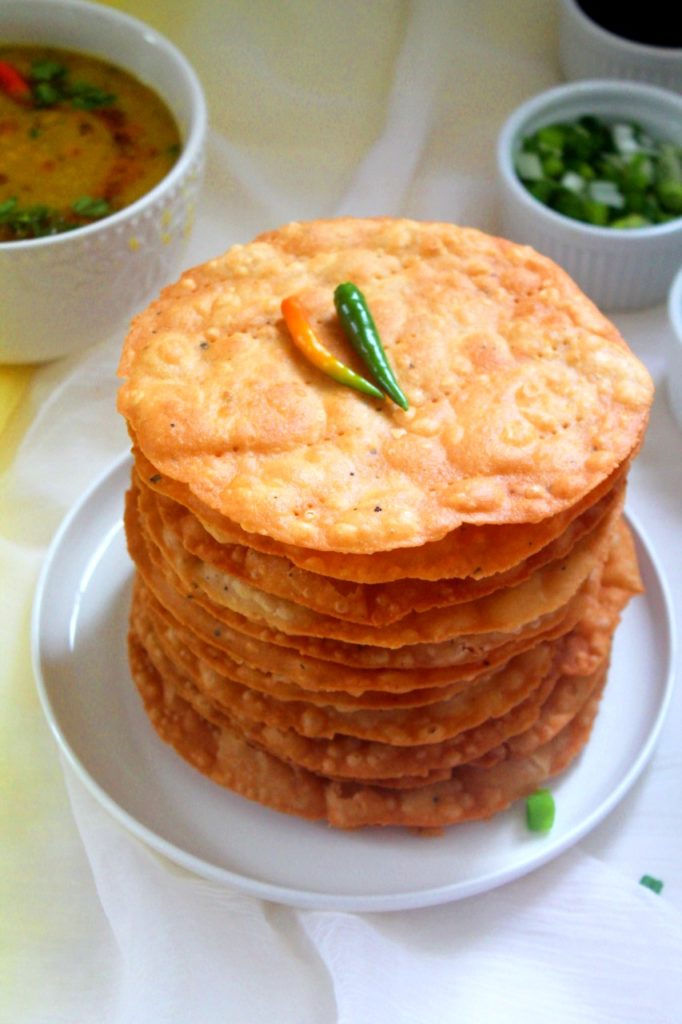
Jump to:
How To Make Sindhi Dal Pakwan - Recipe Video
About Dal Pakwan
Dal pakwan is a popular, classic Sindhi breakfast dish, relished by all ages. Dal pakwan consists of mainly two components – dal and pakwan. Typically, chana dal is served over pakwan (crispy fried bread), drizzled with some imli ki chutney, green chutney, and chopped onions. This classic dish is mainly served as a breakfast, but makes an excellent brunch or a snack.
As a kid, I was so fond of these crispy, fried, pakwan. Crisp, flaky, pakwan, perfect for weekend brunch. My mom used to make these and we used to devour these Pakwan with dal. Honestly, these were so good, that I could eat these whole day.
Dal pakwan were made on special occasions, and/or festivals, as these are quite rich and indulgent. I remember, during Diwali, and Holi, these were a must in my family. My mom used to cook big during festivals and share food with family and friends. She used to make a big batch of these pakwan to serve it with chana dal. These pakwan can be stored for up to 2 weeks in an air-tight container.
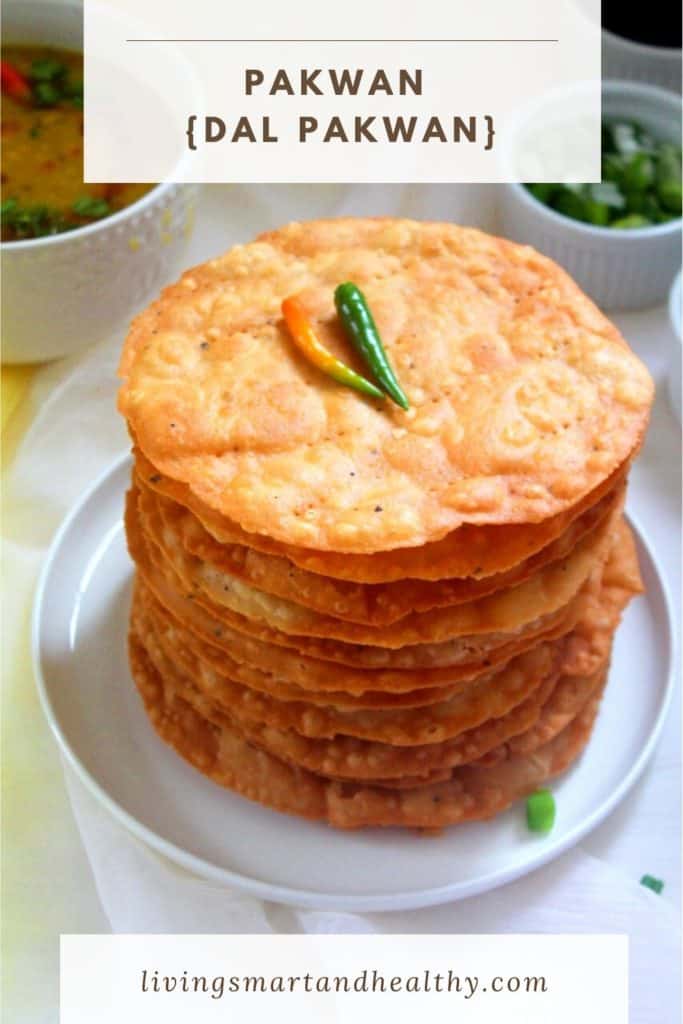
Dal pakwan is a bit time-consuming, it takes time and patience to fry the pakwan. But, once you have it, trust me every bite is worth the effort. We all need a treat every once in a while, isn’t.
I prepare Dal pakwan, occasionally to treat my family. With a little planning, you can make an amazing dish, that will surely bring smile on everyone’s face. And the best part of this dish is that, you can make this dal pakwan using pantry ingredients.
Please see I have split this post in half, I will be covering how to make the pakwan, crispy fried bread in this post. Please refer to my post for the chana dal that goes with this pakwan. Enjoy this authentic Sindhi breakfast – Dal Pakwan!
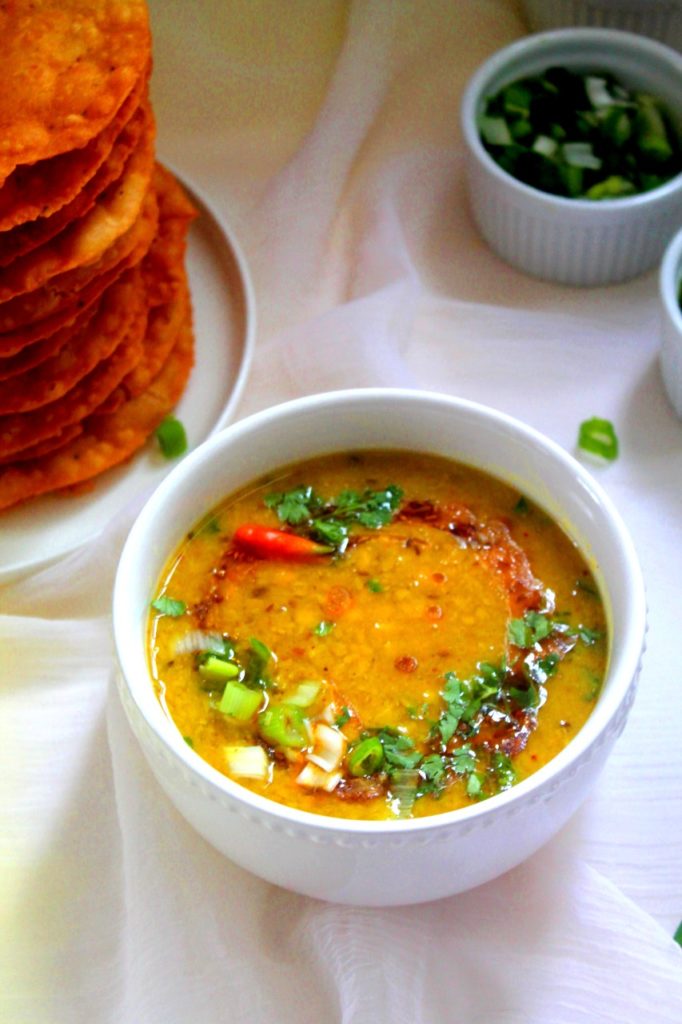
Difference Between Pakwan & Poori
Poori and pakwan, are both deep fried, Indian bread. They both are made with whole wheat flour ( atta ), all-purpose flour ( maida ) or a combination of flour.
However, the dough and the technique of making both are different. For regular poori, dough is prepared simply with the combination of flour and water. It is rolled into small circle and deep fried. The regular poori, takes less time to fry. It has a soft, delicate texture.
Poori can be made plain or masala poori. For masala poori, spices and herbs such as ajwain, cumin seed, spinach, are added to the dough.
For pakwan, fat ( moyen ) is added to knead the dough. The fat in the dough, is what gives it crisp and flaky texture. Pakwan is rolled slightly thin and takes longer to cook. The texture of pakwan is crisp, flaky, melt-in-mouth.

Ingredients
- 1 cup whole wheat flour (atta)
- 1 cup all-purpose flour
- 2 tablespoon ghee ( For vegan, use oil )
- 1 teaspoon whole black peppercorns, coarsely crushed
- ½ teaspoon salt, adjust to taste
- ¾ cup water to knead the dough, as needed
- 2 – 2 ½ cups oil for deep frying the pakwan
How To Make Pawkan
The method of making pakwan is similar to making puri. We start by kneading the pakwan dough, followed by rolling the pakwan and lastly frying the pakwan.
Step 1: Prepare The Dough
- In a large bowl, add whole wheat flour, all-purpose flour, ghee and salt to taste.
- Mix all the ingredients with your hands.
- Take the flour mixture between your palms and rub it to form a crumbly breadcrumb like texture.
- When you hold the mixture in your fist, it should hold the shape and not crumble.
- Gradually, add water and form into a semi-tight, smooth dough. Cover and let the dough rest for 10 minutes.
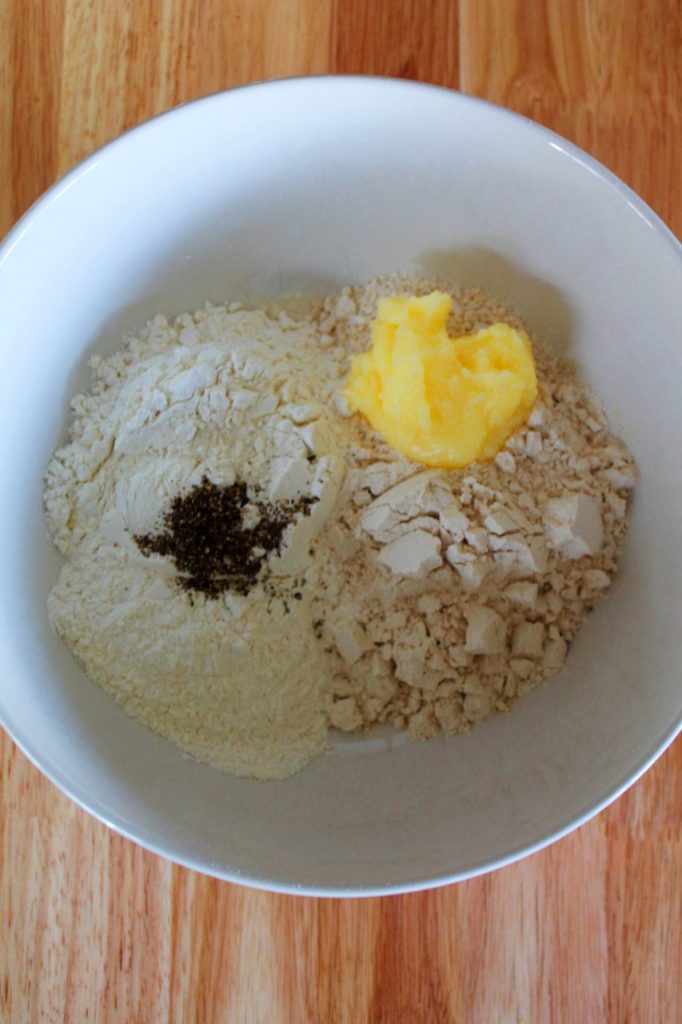
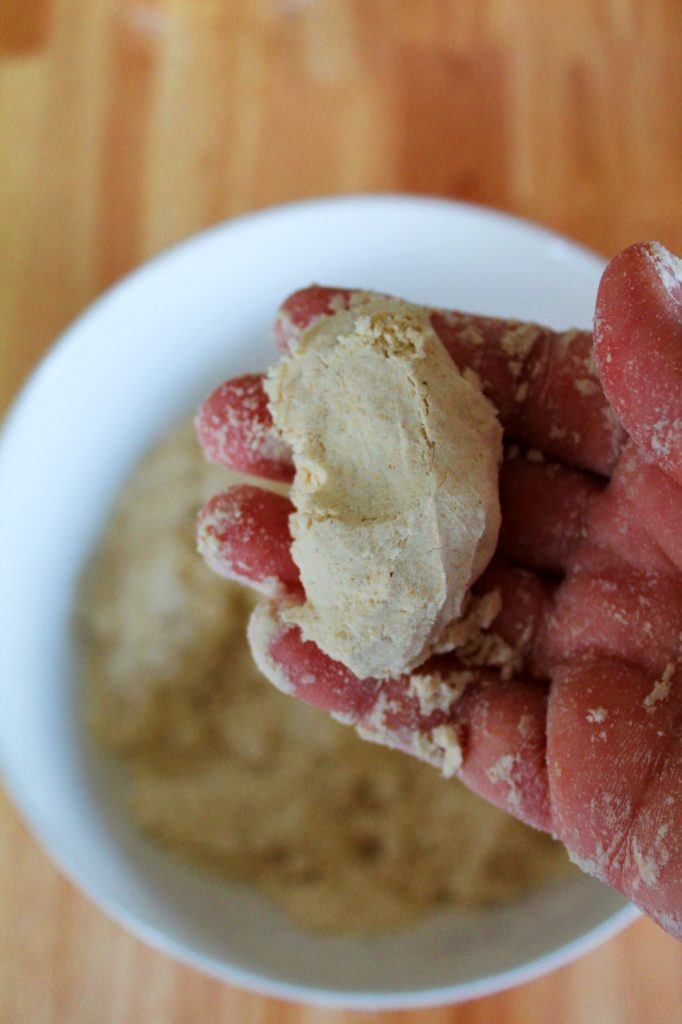
Step 2: Roll The Pakwan
- Divide the dough into 16 equal portions. Shape the dough into balls and cover with a clean kitchen towel.
- Take a dough ball and roll it around 5-6 inch circle. Using a fork, prick the rolled pakwan for few times. Note: It is important to prick the pakwan, so that it does not puff up while frying.
- Cover the rolled pakwan with a clean kitchen towel, to prevent the pakwan from drying.
- Continue with the rest of the dough. This recipe makes around 16 pakwan.
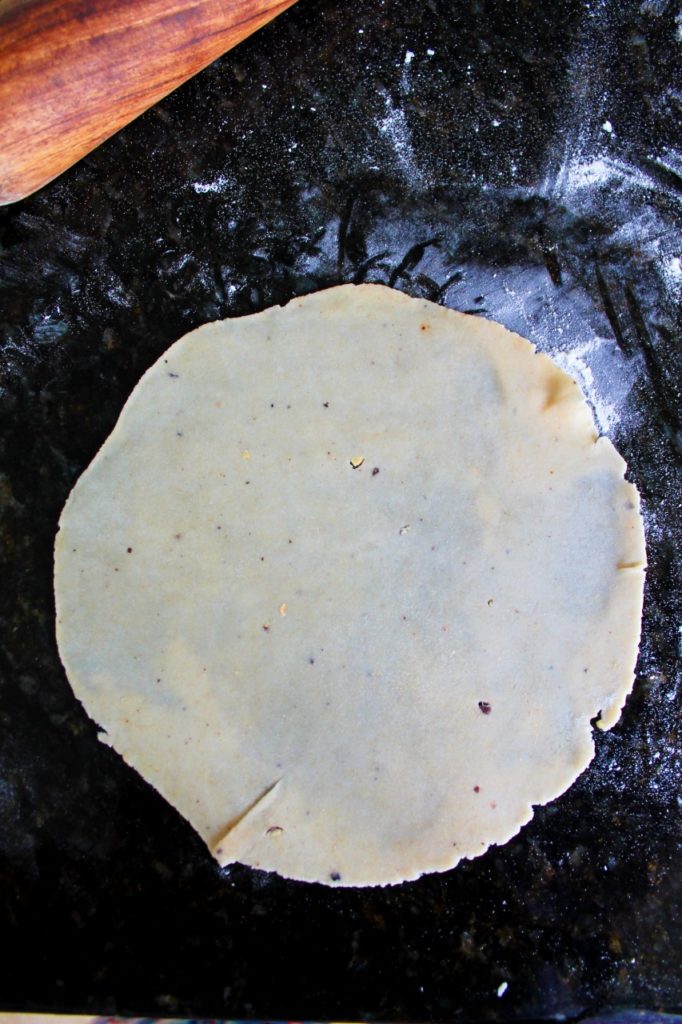
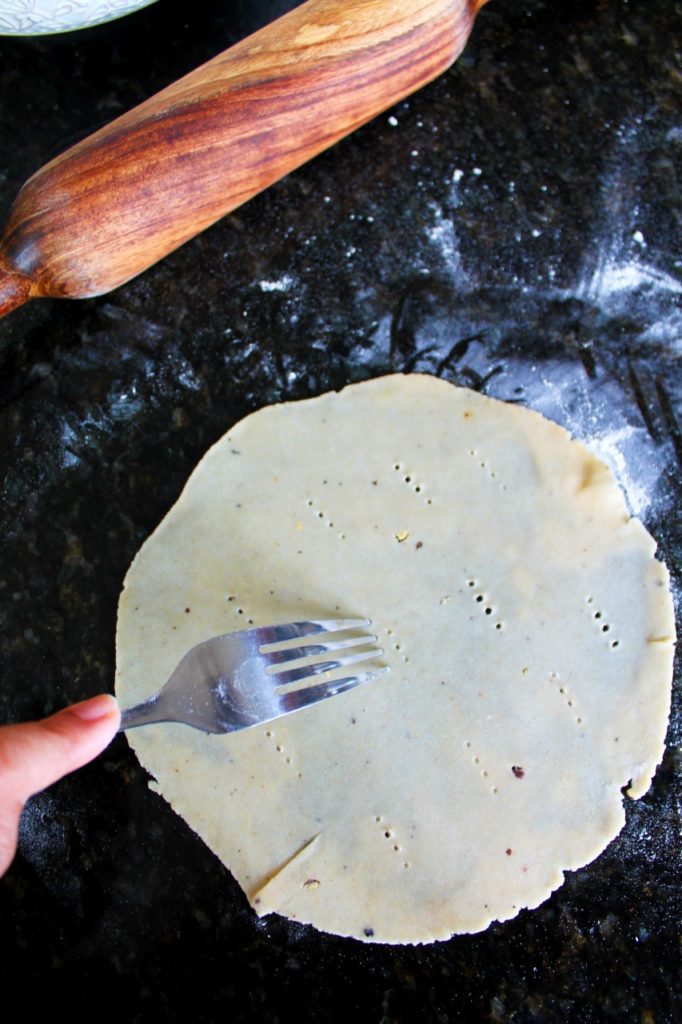
Step 3: Fry The Pakwan
- In a kadai or a wok, add around 2 – 2 ½ cups of oil. Keep the heat to medium-low.
- Once the oil is moderately hot, carefully slide the pakwan into the oil. Note: The oil should not be too hot.
- Gently, press the pakwan with the perforated spoon/ladle.
- Once the base of the pakwan turns slightly brown, carefully turn the pakwan on the other side and let it cook.
- It takes around 2-3 minutes to fry the pakwan. Fry the pakwan until both the sides are nice golden brown and crispy. Remove the pakwan on the paper towel. Finish frying rest of the pakwan.
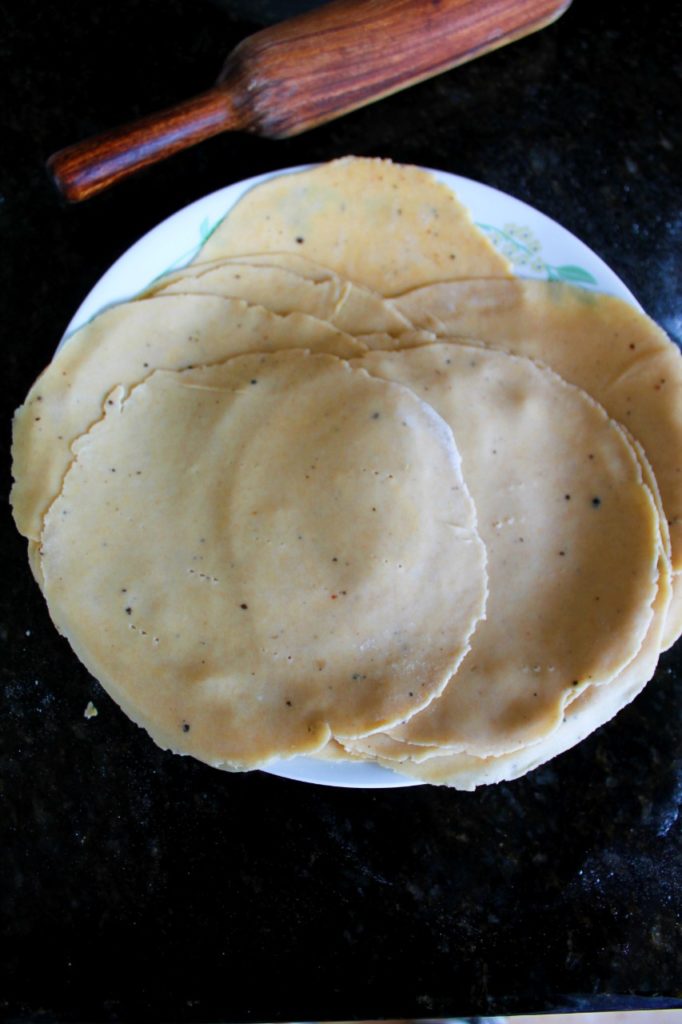
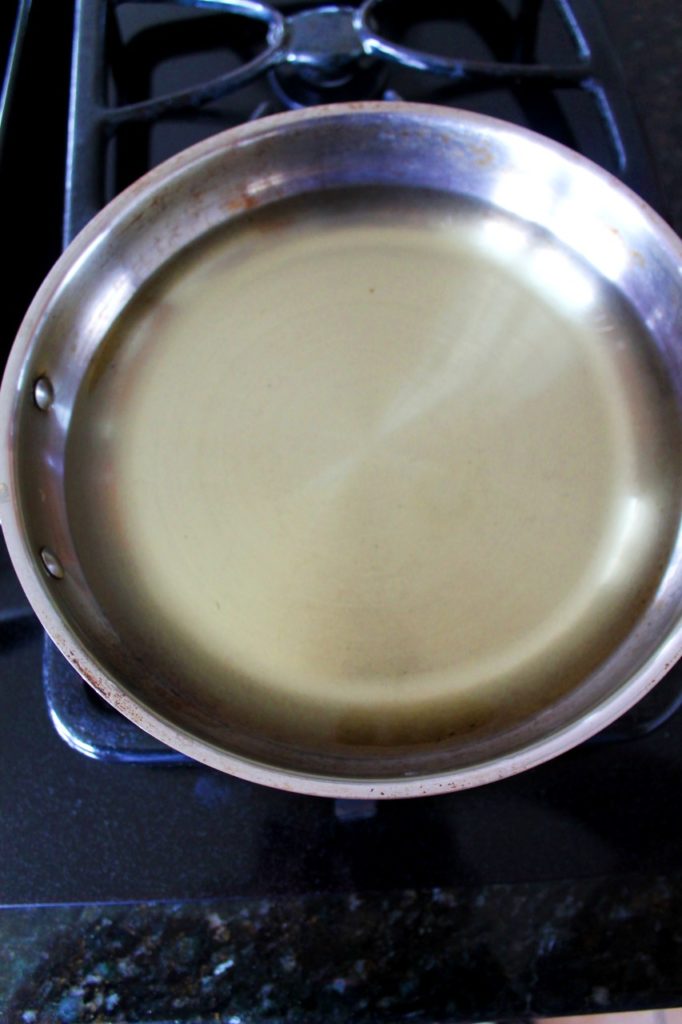
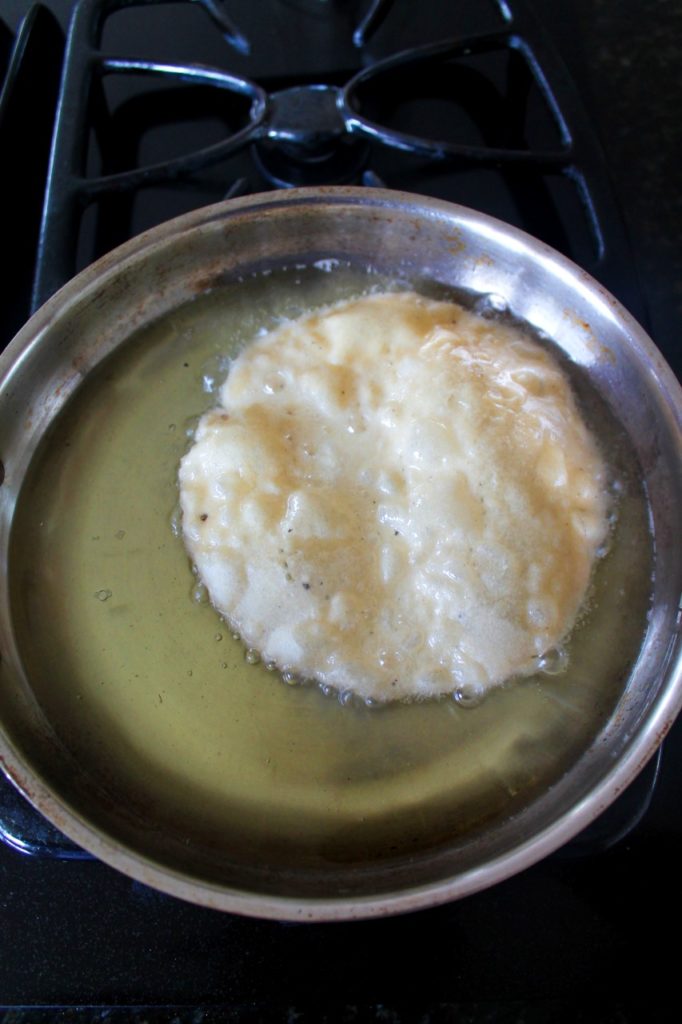
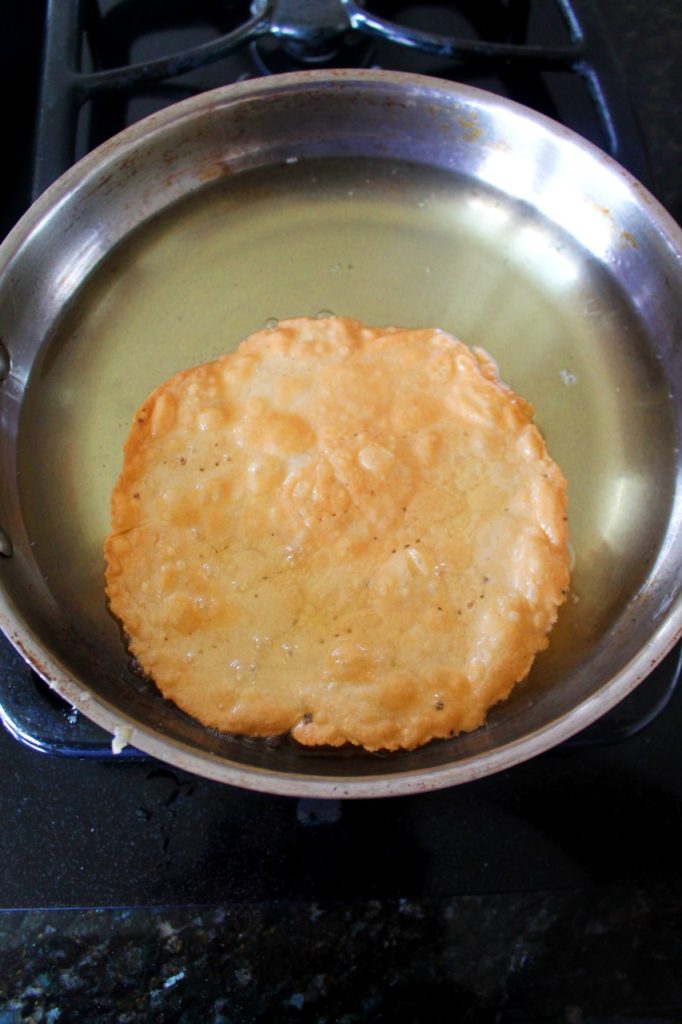
Serve this pakwan with chana dal, drizzled with tamarind chutney, cilantro chutney, and chopped onions.
Pic Shown: Closeup of Pakwan
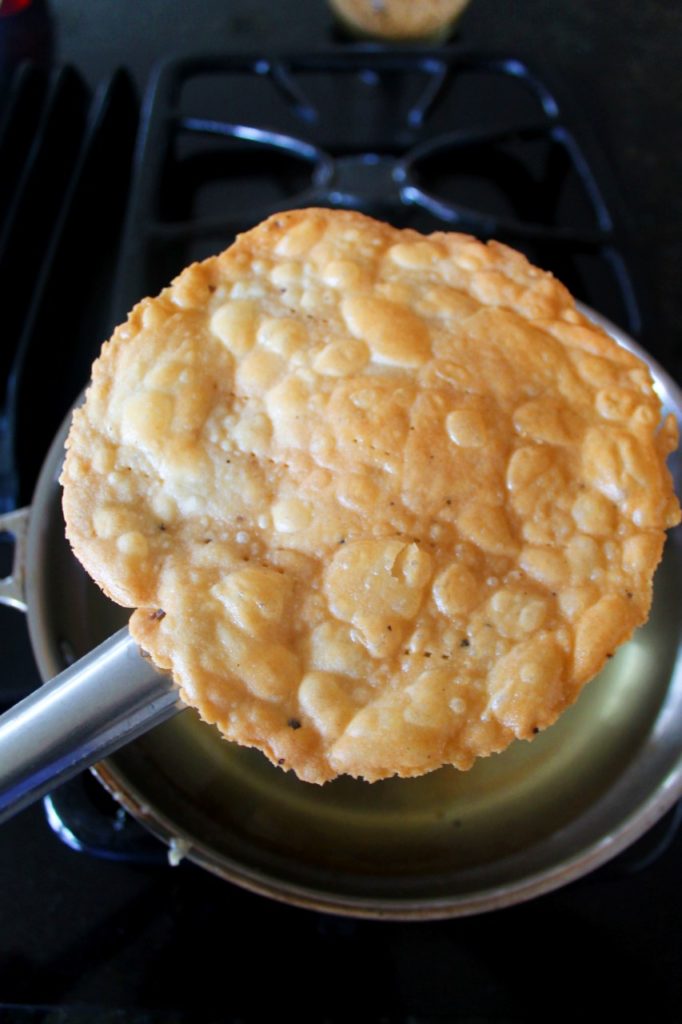
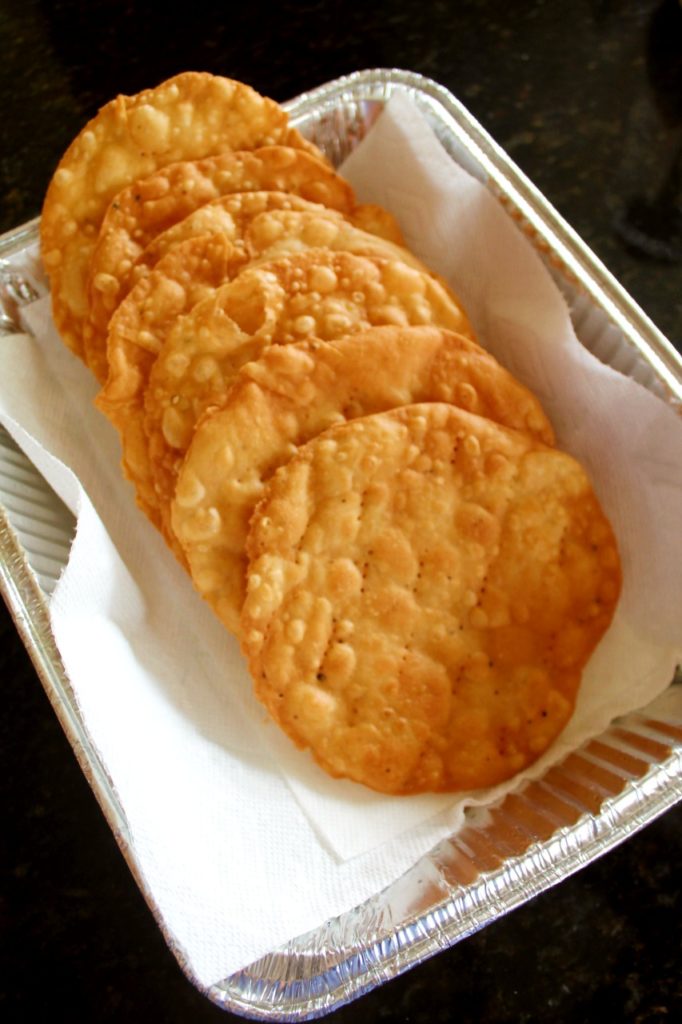
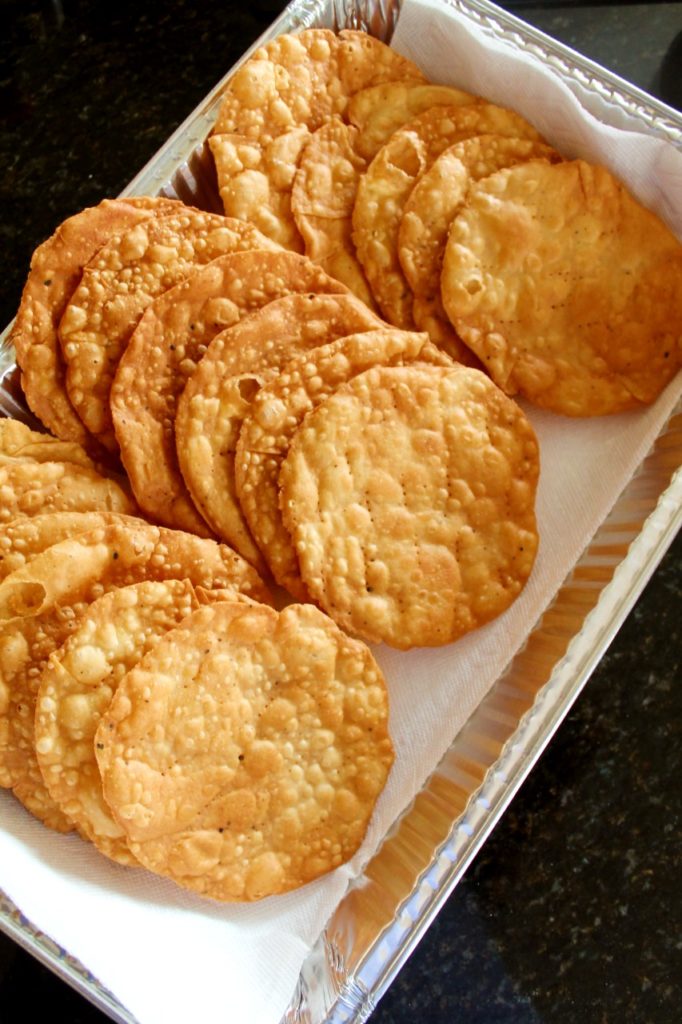
Pro Tips For Crispy Pakwan
The proportion of flour to fat ( moyen ) is important. I have tried using less ghee, however, it is difficult to get the khasta ( crisp ) pakwan.
Gradually, add water to knead a tight, smooth consistency dough. Dough should be similar to pastry or poori dough, slightly tight.
The dough should not be too dry or too sticky. If it feels dry add few drops of water and smooth it out. If the dough feels sticky add some more flour and knead it to a tight, smooth dough.
Pakwan, is rolled slightly thin than the regular poori. If the pakwan is rolled too thick, the inside of the pakwan stays uncooked and does not crisp up well. You are looking for a crisp, flaky pakwan.
Pricking the bread before frying is important, this prevents the bread from puffing while frying, and as a result you get crisp bread.
Oil should be moderately hot, throughout the frying process. Maintain the heat to medium -low for best results. If oil is too hot, the outside of the pakwan gets cooked but inside remains under-cooked. If the oil is cold, the pakwan absorbs too much oil.
Cook on both sides for even brown, crisp texture of the pakwan.
Pic Shown: Pakwan served with chana dal
Storage
Pakwan stays fresh for 1-2 weeks. Store it in an air-tight container.
Pakwan does not require refrigeration. If these are cooked right, they stay fresh for up to 1-2 weeks at room temperature. Store it in an air-tight container.
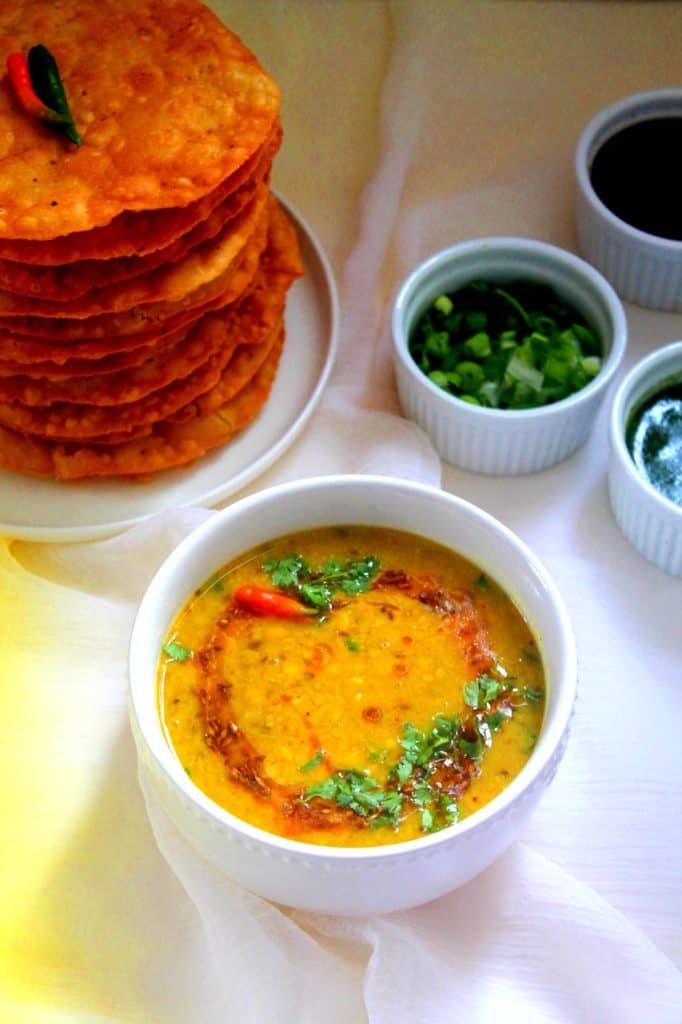
Variations & Substitutions
Butter: Substitute butter for ghee, works just fine. For vegan, use oil.
Flour: Use all-purpose flour, whole wheat flour, or a combination of all-purpose flour and whole wheat flour to make pakwan.
Masala Pakwan: Make masala pakwan instead of just plain pakwan. For masala pakwan, use a combination of spices and herbs such as cumin seeds, ajwain, dry spices – turmeric, red chili powder. I also add some dried parsley for some flavor and color.
Frequently Asked Questions
Sindhi Pakwan is made from a simple dough of flour, carom seeds (ajwain), and ghee, rolled into thin discs and deep-fried until crispy. It is traditionally served with Sindhi dal or other curries, offering a perfect blend of textures and flavors.
Sindhi Kadhi is a famous and traditional Sindhi dish made with a tangy, flavorful curry of vegetables, gram flour, and a variety of spices. It is typically served with steamed rice, offering a comforting and wholesome meal.
In Sindhi cuisine, a popular dal is "Tidali Dal," made by combining chana dal, urad dal, and moong chilka, cooked together with spices for a rich, flavorful dish. This hearty dal is often served with rice or flatbreads, making it a staple in Sindhi households.
Pic Shown: Pakwan served with chana dal, drizzled with tamarind chutney, cilantro chutney, and chopped onions.
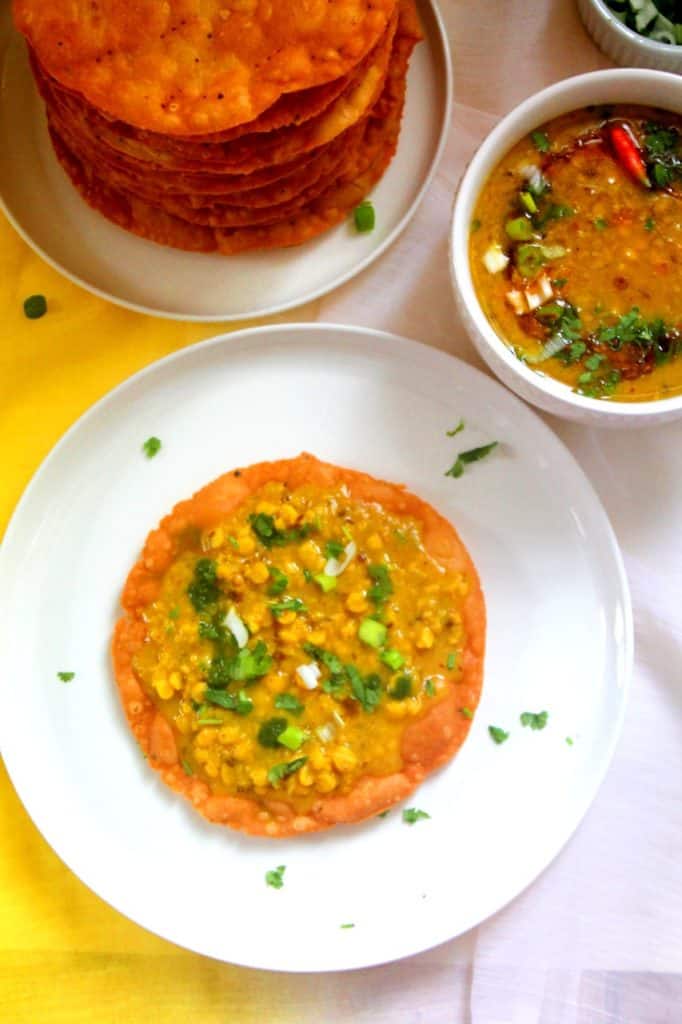
Pairing Suggestions
Traditionally, pakwan is served with chana dal, but it also goes well with:
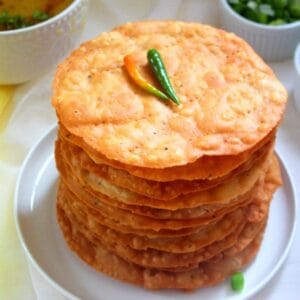
Sindhi Dal Pakwan | Pakwan Recipe
Equipment
Ingredients
Ingredients For Sindhi Pakwan
- 1 cup all-purpose flour
- 1 cup whole wheat flour / atta
- 1 teaspoon whole black peppercorns, coarsely crushed
- 2 tablespoon ghee ( For vegan, use oil )
- ½ teaspoon salt, adjust to taste
- 1 teaspoon oil
- ¾ cup water, as needed
- Flour for dusting
For Frying Pakwan:
- 2 - 2 ½ cup Oil for frying
Instructions
How To Make Pawkan
Step 1: Prepare The Dough
- In a large bowl, add whole wheat flour, all-purpose flour, ghee and salt to taste.
- Mix all the ingredients with your hands.
- Take the flour mixture between your palms and rub it to form a crumbly breadcrumb like texture.Note: When you hold the mixture in your fist, it should hold the shape and not crumble.
- Gradually, add water and form into a semi-tight, smooth dough. Cover and let the dough rest for 10 minutes.
Step 2: Roll The Pakwan
- Divide the dough into 16 equal portions. Shape the dough into balls and cover with a clean kitchen towel.
- Take a dough ball and roll it around 5-6 inch circle. Using a fork, prick the rolled pakwan for few times.Note: Note: It is important to prick the pakwan, so that it does not puff up while frying.
- Cover the rolled pakwan with a clean kitchen towel, to prevent the pakwan from drying.
- Continue with the rest of the dough. This recipe makes around 16 pakwan.
Step 3: Fry The Pakwan
- In a kadai or a wok, add around 2 – 2 ½ cups of oil. Keep the heat to medium-low.
- Once the oil is moderately hot, carefully slide the pakwan into the oil.Note: The oil should not be too hot.
- Gently, press the pakwan with the perforated spoon (ladle).
- Once the base of pakwan turns slightly brown, carefully turn the pakwan on the other side and let it cook.
- It takes around 2-3 minutes to fry the pakwan. Fry the pakwan until both the sides are nice golden brown and crispy. Remove the pakwan on the paper towel. Finish frying rest of the pakwan.
- Serve this pakwan with chana dal, drizzled with tamarind chutney, cilantro chutney, and chopped onions.
Video
Notes
Pro Tips For Crispy Pakwan
The proportion of flour to fat ( moyen ) is important. I have tried using less ghee, however, it is difficult to get the khasta ( crisp ) pakwan. Gradually, add water to knead a tight, smooth consistency dough. Dough should be similar to pastry or poori dough, slightly tight. The dough should not be too dry or too sticky. If it feels dry add few drops of water and smooth it out. If the dough feels sticky add some more flour and knead it to a tight, smooth dough. Pakwan, is rolled slightly thin than the regular poori. If the pakwan is rolled too thick, the inside of the pakwan stays uncooked and does not crisp up well. You are looking for a crisp, flaky pakwan. Pricking the bread before frying is important, this prevents the bread from puffing while frying, and as a result you get crisp bread. Oil should be moderately hot, throughout the frying process. Maintain the heat to medium -low for best results. If oil is too hot, the outside of the pakwan gets cooked but inside remains under-cooked. If the oil is cold, the pakwan absorbs too much oil. Cook on both sides for even brown, crisp texture of the pakwan.Storage
Pakwan stays fresh for 1-2 weeks. Store it in an air-tight container. Pakwan does not require refrigeration. If these are cooked right, they stay fresh for up to 1-2 weeks at room temperature. Store it in an air-tight container.Nutrition
Disclaimer
Nutrition values are my best estimates. If you rely on them for your diet, use your preferred nutrition calculator.

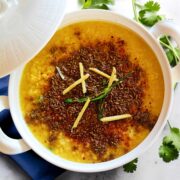

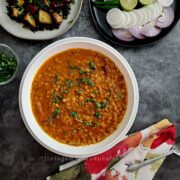
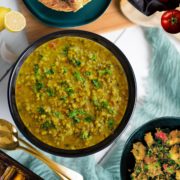
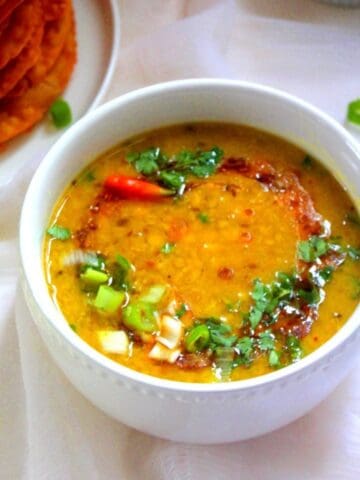
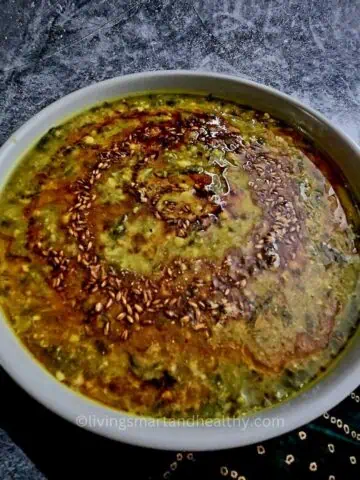
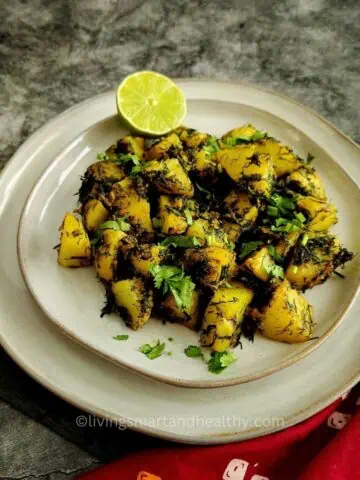
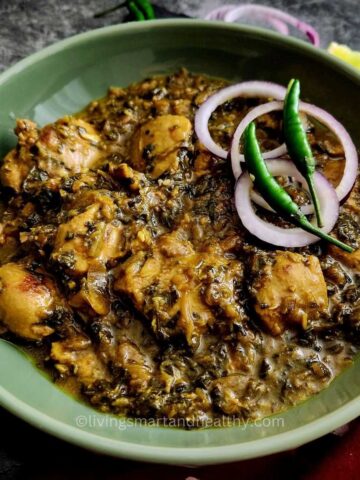
Leave a Reply
You must be logged in to post a comment.